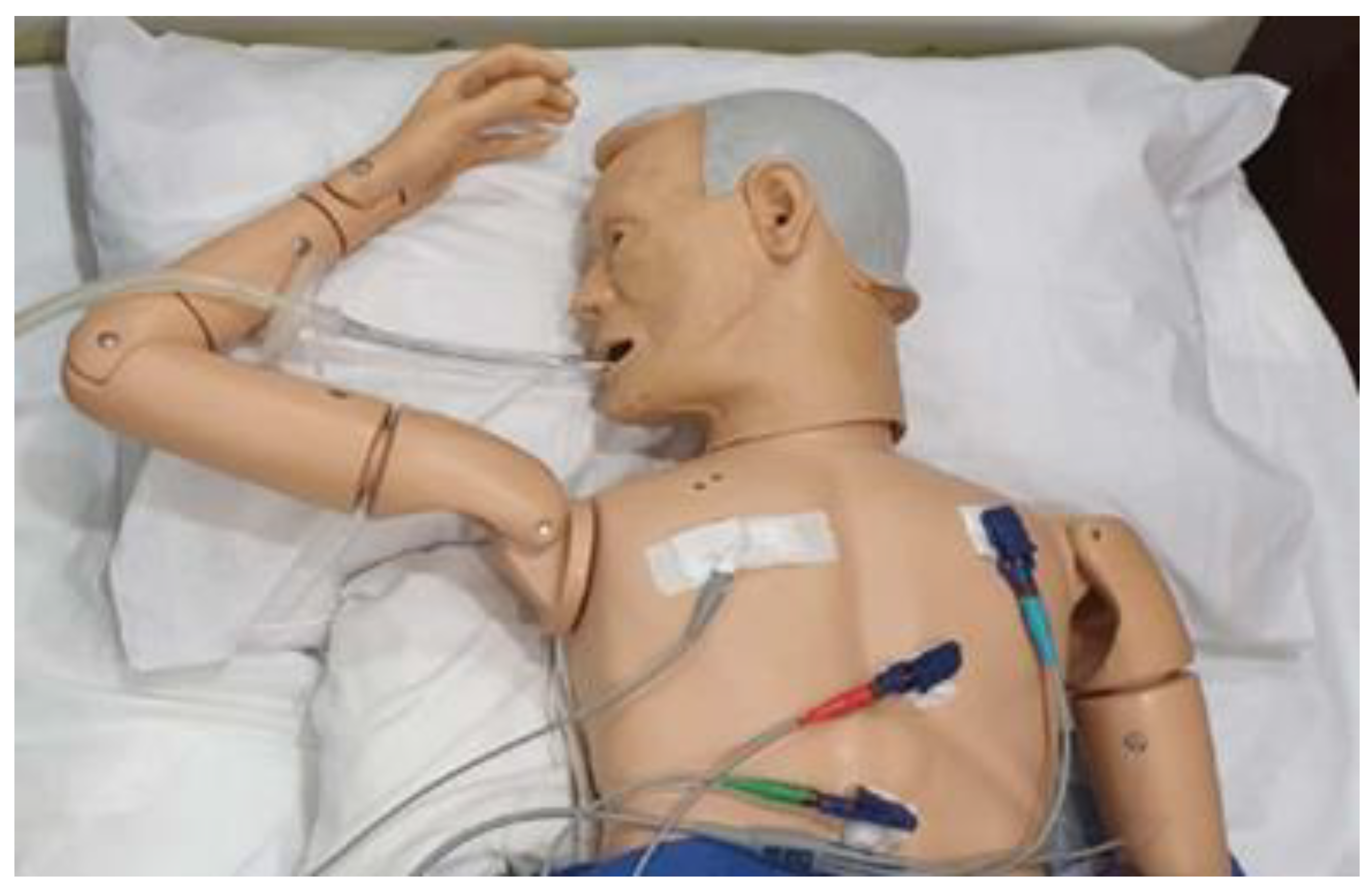The Application of Prone Position to Improving Pulmonary Ventilation in COVID-19 Cases Treated in The ICU: Literature Review †
Abstract
:1. Introduction
2. Research Methods
3. Results
4. Discussion
5. Conclusions
Author Contributions
Funding
Institutional Review Board Statement
Informed Consent Statement
Data Availability Statement
Conflicts of Interest
References
- Wang, Y.; Zhang, M.; Yu, Y.; Han, T.; Zhou, J.; Bi, L. Sputum characteristics and airway clearance methods in patients with severe COVID-19. Medicine 2020, 99, e23257. [Google Scholar] [CrossRef] [PubMed]
- Anonymous. Bagaimana COVID-19 Ditularkan? [Internet]; World Health Organization (WHO): Geneva, Switzerland, 2020; Available online: https://www.who.int/indonesia/news/novel-coronavirus/qa/qa-how-is-covid-19-transmitted (accessed on 23 November 2021).
- Shang, Y.; Pan, C.; Yang, X.; Zhong, M.; Shang, X.; Wu, Z.; Yu, Z.; Zhang, W.; Zhong, Q.; Zheng, X.; et al. Management of critically ill patients with COVID-19 in ICU: Statement from front-line intensive care experts in Wuhan, China. Ann. Intensive Care 2020, 10, 73. [Google Scholar] [CrossRef] [PubMed]
- Grasselli, G.; Cattaneo, E.; Florio, G.; Ippolito, M.; Zanella, A.; Cortegiani, A.; Huang, J.; Pesenti, A.; Einav, S. Mechanical ventilation parameters in critically ill COVID-19 patients: A scoping review. Crit Care 2021, 25, 115. [Google Scholar] [CrossRef] [PubMed]
- Ziehr, D.R.; Alladina, J.; Petri, C.R.; Maley, J.H.; Moskowitz, A.; Medoff, B.D.; Hibbert, K.A.; Thompson, B.T.; Hardin, C.C. Respiratory Pathophysiology of Mechanically Ventilated Patients with COVID-19: A Cohort Study. Am. J. Respir. Crit. Care Med. 2020, 201, 1560–1564. [Google Scholar] [CrossRef] [PubMed]
- Fossali, T.; Pavlovsky, B.; Ottolina, D.; Colombo, R.; Basile, M.C.; Castelli, A.; Rech, R.; Borghi, B.; Ianniello, A.; Flor, N.; et al. Effects of Prone Position on Lung Recruitment and Ventilation-Perfusion Matching in Patients With COVID-19 Acute Respiratory Distress Syndrome. Crit. Care Med. 2022, 50, 723–732. [Google Scholar] [CrossRef] [PubMed]
- Mittermaier, M.; Pickerodt, P.; Kurth, F.; de Jarcy, L.B.; Uhrig, A.; Garcia, C.; Machleidt, F.; Pergantis, P.; Weber, S.; Li, Y.; et al. Evaluation of PEEP and prone positioning in early COVID-19 ARDS. EClinicalMedicine 2020, 28, 100579. [Google Scholar] [CrossRef] [PubMed]
- Khullar, R.; Shah, S.; Singh, G.; Bae, J.; Gattu, R.; Jain, S.; Green, J.; Anandarangam, T.; Cohen, M.; Madan, N.; et al. Effects of prone ventilation on oxygenation, inflammation, and lung infiltrates in COVID-19 related acute respiratory distress syndrome: A retrospective cohort study. J. Clin. Med. 2020, 9, 4129. [Google Scholar] [CrossRef] [PubMed]
- Bamford, P.; Brown, H.; Quick, T. Guidance For: Prevention, Diagnosis and Management of Plexopathy during Prone Positioning; Intensive Care Society and British Orthopaedic Society: London, UK, 2020; Volume 5. [Google Scholar]
- Shelhamer, M.C.; Wesson, P.D.; Solari, I.L.; Jensen, D.L.; Steele, W.A.; Dimitrov, V.G.; Kelly, J.D.; Aziz, S.; Gutierrez, V.P.; Vittinghoff, E.; et al. Prone Positioning in Moderate to Severe Acute Respiratory Distress Syndrome Due to COVID-19: A Cohort Study and Analysis of Physiology. J. Intensive Care Med. 2021, 36, 241–252. [Google Scholar] [CrossRef]
- Ferreira, J.C.; Ho, Y.L.; Besen, B.A.M.P.; Malbouisson, L.M.S.; Taniguchi, L.U.; Mendes, P.V.; Costa, E.L.V.; Park, M.; Daltro-Oliveira, R.; Roepke, R.M.; et al. Protective ventilation and outcomes of critically ill patients with COVID-19: A cohort study. Ann. Intensive Care 2021, 11, 92. [Google Scholar] [PubMed]

| Parameter (mmHg) | Supine Position | Prone Position |
|---|---|---|
| PaO2 | 85 (±21) | 142 (±90) |
| PaO2/FiO2 | 110–190 | 120–240 |
| Timeline | Deceased Patients’ Score | Living Patients’ Score |
|---|---|---|
| Middle Lobe | ||
| Pre-Prone | 2.0 | 2.5 |
| Post-Prone | 0.4 | −0.2 |
| Follow-up 48 h | 0.2 | −0.2 |
| Lower Lobe | ||
| Pre-Prone | 2.3 | 3.5 |
| Post-Prone | 0.4 | −0.7 |
| 48 h Follow-up | 0.1 | −1.0 |
| Parameter | Pre-Prone | Post-Prone | Follow-Up (48 h) |
|---|---|---|---|
| PaO2 (mmHg) | 79.5 | 173 | 78.8 |
| FiO2 (%) | 95.7 | 83.0 | 78.6 |
| PaO2/FiO2 (mmHg) | 84.8 | 202 | 109 |
Disclaimer/Publisher’s Note: The statements, opinions and data contained in all publications are solely those of the individual author(s) and contributor(s) and not of MDPI and/or the editor(s). MDPI and/or the editor(s) disclaim responsibility for any injury to people or property resulting from any ideas, methods, instructions or products referred to in the content. |
© 2022 by the authors. Licensee MDPI, Basel, Switzerland. This article is an open access article distributed under the terms and conditions of the Creative Commons Attribution (CC BY) license (https://creativecommons.org/licenses/by/4.0/).
Share and Cite
Pahlawi, R.; Benanda, A.; Abdullah, F.; Noviana, M.; Pratama, A.D. The Application of Prone Position to Improving Pulmonary Ventilation in COVID-19 Cases Treated in The ICU: Literature Review. Proceedings 2022, 83, 23. https://doi.org/10.3390/proceedings2022083023
Pahlawi R, Benanda A, Abdullah F, Noviana M, Pratama AD. The Application of Prone Position to Improving Pulmonary Ventilation in COVID-19 Cases Treated in The ICU: Literature Review. Proceedings. 2022; 83(1):23. https://doi.org/10.3390/proceedings2022083023
Chicago/Turabian StylePahlawi, Riza, Alma Benanda, Faizah Abdullah, Mita Noviana, and Aditya Denny Pratama. 2022. "The Application of Prone Position to Improving Pulmonary Ventilation in COVID-19 Cases Treated in The ICU: Literature Review" Proceedings 83, no. 1: 23. https://doi.org/10.3390/proceedings2022083023
APA StylePahlawi, R., Benanda, A., Abdullah, F., Noviana, M., & Pratama, A. D. (2022). The Application of Prone Position to Improving Pulmonary Ventilation in COVID-19 Cases Treated in The ICU: Literature Review. Proceedings, 83(1), 23. https://doi.org/10.3390/proceedings2022083023





